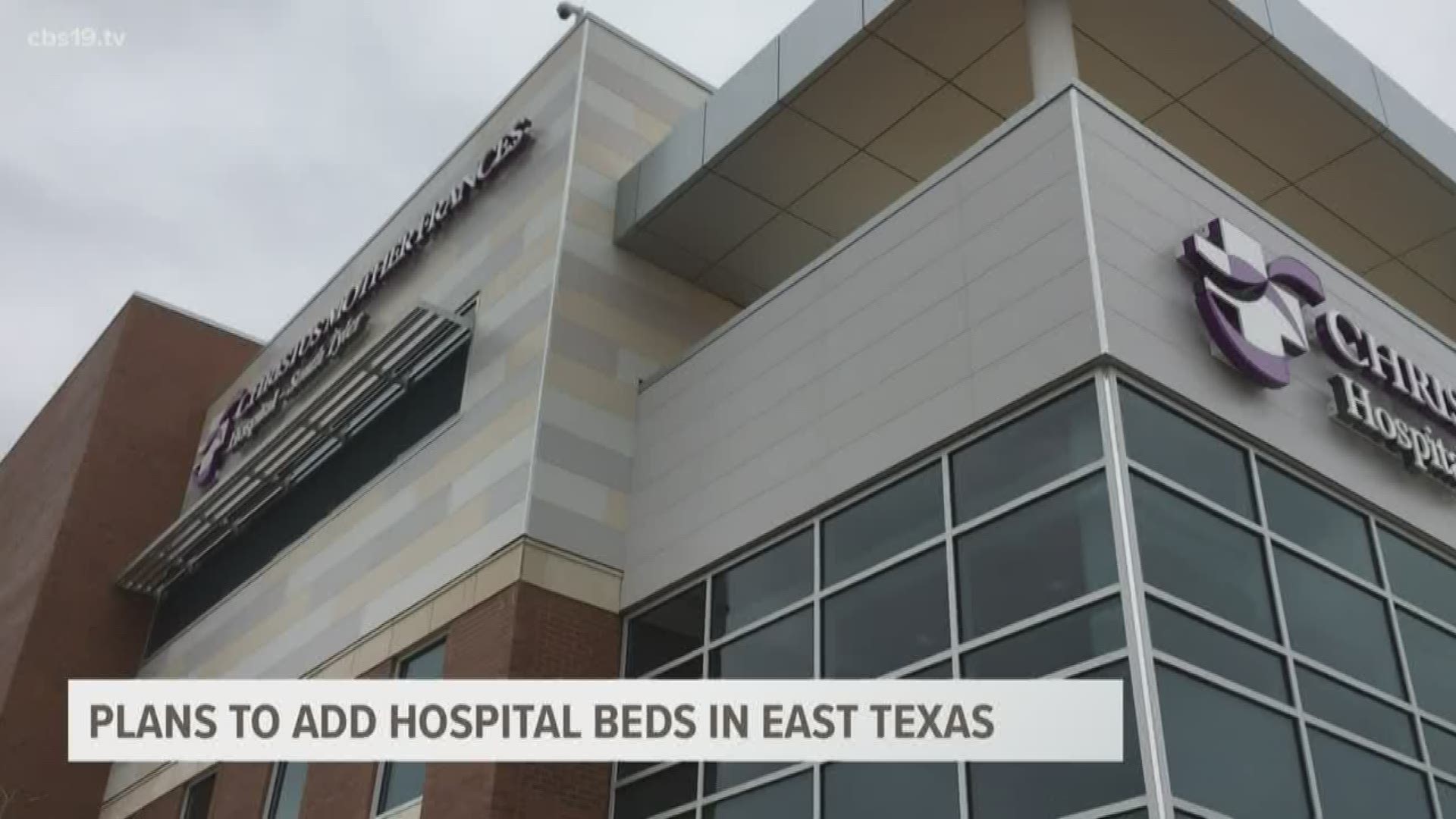TYLER, Texas — The number of positive cases of COVID-19 in Texas jumped by more than 40 percent on Thursday.
As more people are tested and diagnosed, the need for hospital space increases, too. Governor Greg Abbott acknowledged Thursday that creating more bed space, assuming the virus will keep spreading faster and faster, is a critical issue.
“We have, as of today, 100 patients in hospitals in Texas with COVID-19,” Abbott stated.
The Texas Department of State Health Services reported Thursday that 1,396 people had tested positive for COVID-19, meaning approximately seven percent of those who tested positive had symptoms severe enough to require hospitalization.
A recent report from Harvard University says East Texas is dangerously low on available beds to deal with the growing pandemic. That is due in part to the closure of several smaller hospitals in recent years.
John Henderson, President and CEO of the Texas Organization of Rural & Community Hospitals, said East Texas is “ground zero” for rural hospital closures in the state. The most recent of those was Van Zandt Regional Medical Center, which closed, re-opened, then closed again in 2019.
Abbott signed some executive orders in the last week to help. One banned all elective surgeries. Another waived regulations for hospitals; it allowed hospitals to erect tents to treat patients, let them put more beds in each room, and allowed hospitals that had closed in the last three years, like Van Zandt Regional, to quickly get a new license and reopen.
“Since those executive orders, I’m proud to tell you that, in the aftermath of those executive orders, more than 3,000 beds have become available in hospitals across the state of Texas,” Abbott said.
In a statement, a spokesperson for the Texas Hospital Association said Thursday:
“We’re doing everything we can to plan and be ready. We are scaling up now. Also keep in mind capacity numbers change rapidly and not everyone would need a ventilator, ICU bed or even hospital treatment at all.
Our capacity numbers are going up every day, as we’ve been able to get waivers for hospitals to increase capacity and also because non-essential surgeries have been suspended.
Texas hospitals are always in planning mode, working on emergency preparedness and taking steps to maximize capacity and plan for surges. We have asked for and received government waivers to allow for more capacity and to boost the availability of health care workers.
We’re working with our state partners to identify additional temporary bed to treat a surge in patients. There is a tremendous amount of planning happening behind the scenes.”
Henderson mentioned that opening facilities that are currently empty would help but getting enough staff members and resources to operate those hospitals would be equally challenging.
Abbott signed another executive order making it easier for retired nurses to get their licenses back and for out-of-state doctors to work in Texas should their home states not need them.
CHRISTUS Health and CHI St. Luke’s Health-Memorial also sent statements in which neither mentioned specific details about occupancy or the number of beds they planned to add.
A spokesperson for CHI St. Luke’s said:
“Our facility has the supplies and equipment (and we believe capacity) needed to effectively manage the care of any suspected or confirmed COVID-19 patients and we are continuously assessing the volume of supplies at our hospital.”
A spokesperson for CHRISTUS wrote:
“We do have emergency preparedness plans in place for CHRISTUS Trinity Mother Frances, and we stand ready to meet the health care needs of our community by providing high quality, compassionate care. These preparations include monitoring and evaluation of our capacity and requirements across our hospitals, including Emergency Departments, ICUs, and laboratories, imaging centers and other treatment and testing areas. One benefit of being part of a multinational health system is that we can work together to access what we need, from clinical guidance to medical supplies.
We are utilizing personal protective equipment (PPE) in accordance with CDC guidelines to keep our Associates and patients safe, and we are reminding our staff to use PPE appropriately. We are tracking our use and availability of all vital medical supplies closely. We are also working with our clinical experts to investigate other options should they be necessary. We aren’t concerned, but we are being prepared.”
The statements from all three organizations encouraged Texans to continue practicing social distancing and wash their hands as frequently as possible to reduce the spread of coronavirus.
Abbott tried to reassure the state Thursday that he and public health leaders are ready for anything.
“Our job is not to deal with the situation where we are, but to be constantly looking forward to the worst-case scenario of where we may be,” Abbott said.
If the virus spreads out of control, the state could partner with the Army Corps of Engineers to turn vacant hospitals, hotels and college dorms into makeshift hospitals.

